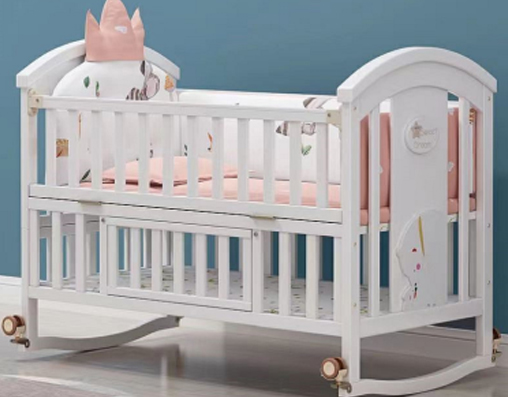Feb. 19, 2024
Rocking cradles have been a cherished and time-honored tradition for soothing and comforting newborns for generations. The gentle rocking motion mimics the comforting sensation of being held or rocked in a caregiver's arms, promoting relaxation and sleep for infants. However, while these traditional sleep solutions can offer numerous benefits for both babies and parents, ensuring their safety is paramount.
1. Enhanced Comfort:
The rocking motion of cradles has been shown to have a calming effect on newborns, helping them to relax and fall asleep more easily. The rhythmic swaying can replicate the sensations experienced in the womb, providing a sense of security and familiarity for babies as they adjust to life outside the womb.
2. Bonding Opportunities:
Using a rocking cradle provides valuable opportunities for bonding between parents and their newborns. Rocking, feeding, and soothing a baby in the cradle fosters emotional connections and strengthens the parent-child relationship. The close physical proximity encourages nurturing interactions and promotes feelings of closeness and security for both baby and caregiver.
3. Sleep Support:
For sleep-deprived parents, rocking cradles can offer much-needed relief by helping babies settle into a restful sleep more quickly and easily. The gentle rocking motion can aid in calming fussy or colicky babies, promoting longer and more restorative periods of sleep for both infants and parents alike.
4. Developmental Benefits:
Research suggests that the soothing motion of rocking cradles may have developmental benefits for infants. The gentle stimulation of the vestibular system, which governs balance and spatial orientation, can promote healthy neurological development and enhance sensory integration skills in babies.
5. Cultural Significance:
Rocking cradles for baby hold cultural significance in many societies around the world, symbolizing nurturing, care, and tradition. In some cultures, the rocking cradle is passed down through generations as a cherished family heirloom, carrying with it the memories and love of previous generations.

Safety Considerations:
While rocking cradles can provide numerous benefits for newborns and parents, ensuring their safety is essential. Here are some important safety considerations to keep in mind:
1. Stability:
Ensure that the rocking cradle is sturdy and stable, with a secure base that prevents tipping or rocking too vigorously. It should have a wide and solid foundation to support the weight of the infant and resist movement.
2. Safety Standards:
Choose a rocking cradle that meets safety standards and regulations, such as ASTM International standards or those set by relevant safety organizations. Look for certifications or labels indicating compliance with safety guidelines.
3. Positioning:
Place the rocking cradle on a flat and level surface, away from hazards such as cords, curtains, or furniture that could pose a risk of entrapment or strangulation. Avoid positioning the cradle near heaters, windows, or other sources of direct sunlight or drafts.
4. Mattress Firmness:
Use a firm and snug-fitting mattress in the rocking cradle to reduce the risk of suffocation or Sudden Infant Death Syndrome (SIDS). Ensure that the mattress fits tightly within the cradle frame without gaps or spaces around the edges.
5. Supervision:
Always supervise newborns while they are in the rocking cradle, especially during sleep. Avoid leaving infants unattended or unsupervised in the cradle, particularly if they are very young or unable to roll over independently.
6. Weight Limit:
Adhere to the manufacturer's recommendations regarding the maximum weight capacity of the rocking cradle. Avoid placing additional items or heavy bedding in the cradle that could exceed weight limits or compromise stability.
7. Proper Use:
Follow the manufacturer's instructions for assembly, use, and maintenance of the rocking cradle. Check regularly for signs of wear or damage, and promptly address any issues to ensure continued safety.
8. Transitioning:
Monitor your baby's development and readiness for transitioning out of the baby rocking cradle. As infants grow and become more mobile, consider transitioning to a crib or bassinet that provides a safe and secure sleeping environment.
Conclusion:
In conclusion, rocking cradles offer a time-tested and cherished method for soothing and comforting newborns. From promoting relaxation and sleep to fostering bonding and cultural connections, these traditional sleep solutions play an essential role in the early days of parenthood. By prioritizing safety and following guidelines for proper use, parents can create a nurturing and secure environment for their babies to rest, grow, and thrive.
Previous: None
Next: None
If you are interested in sending in a Guest Blogger Submission,welcome to write for us!
All Comments ( 0 )